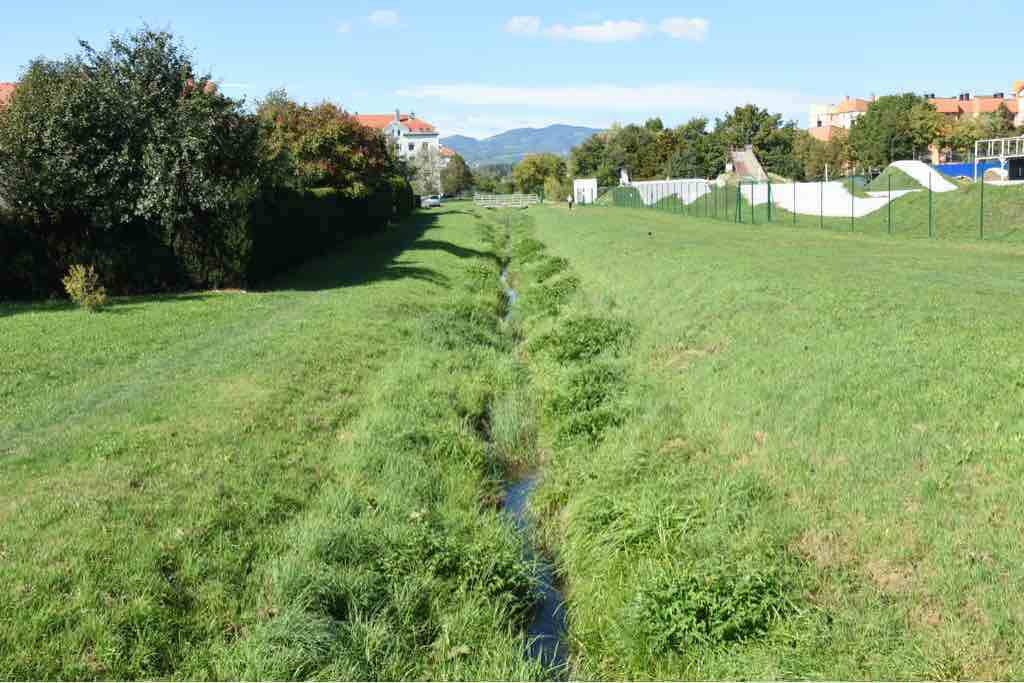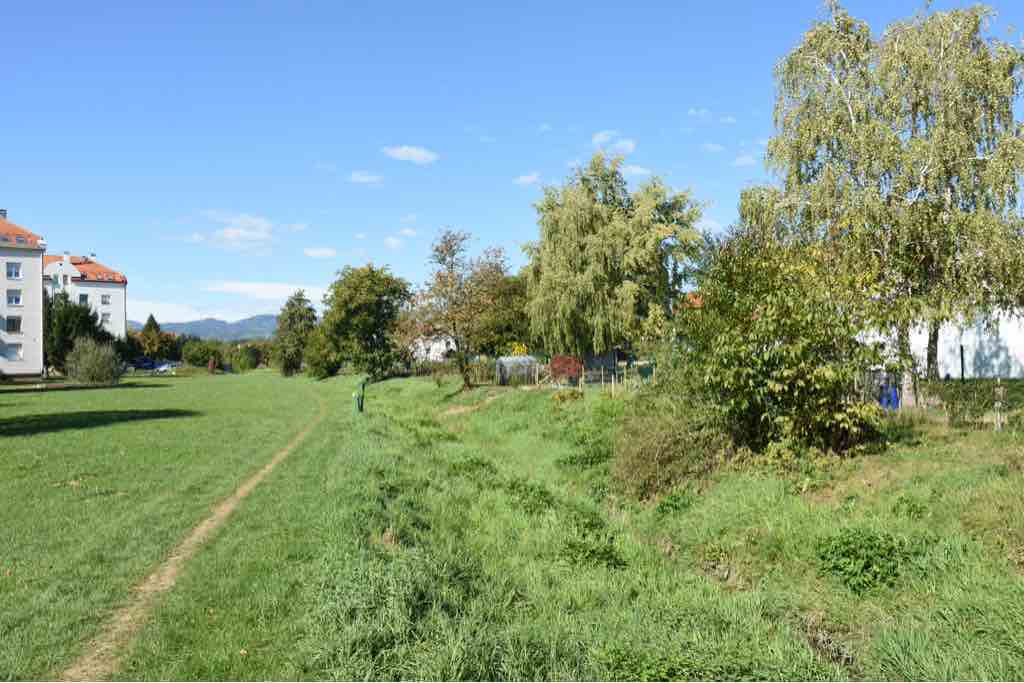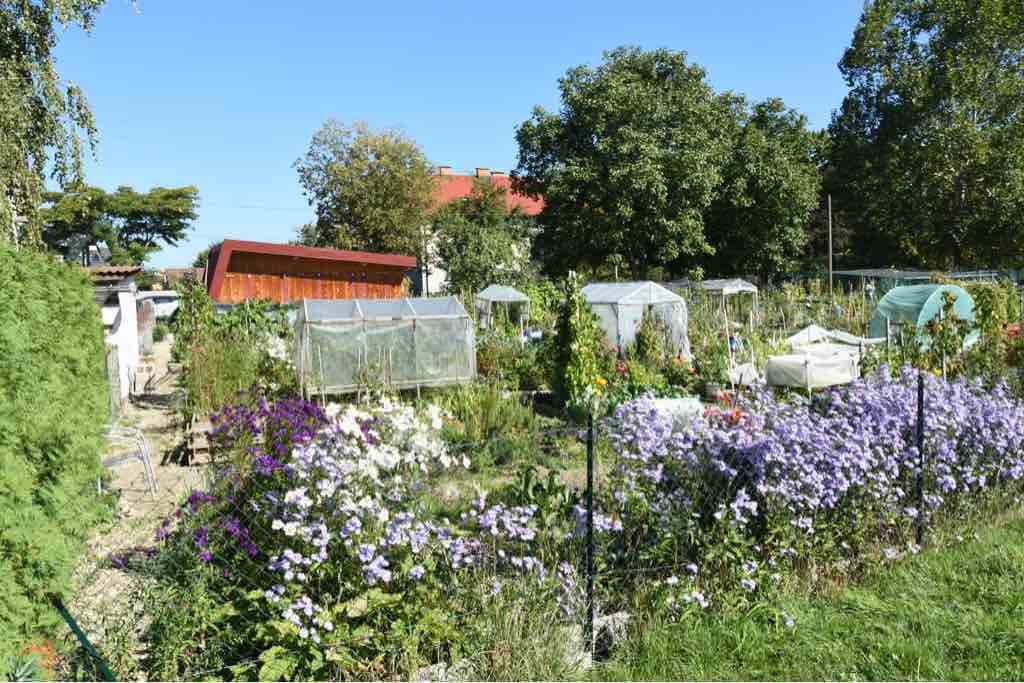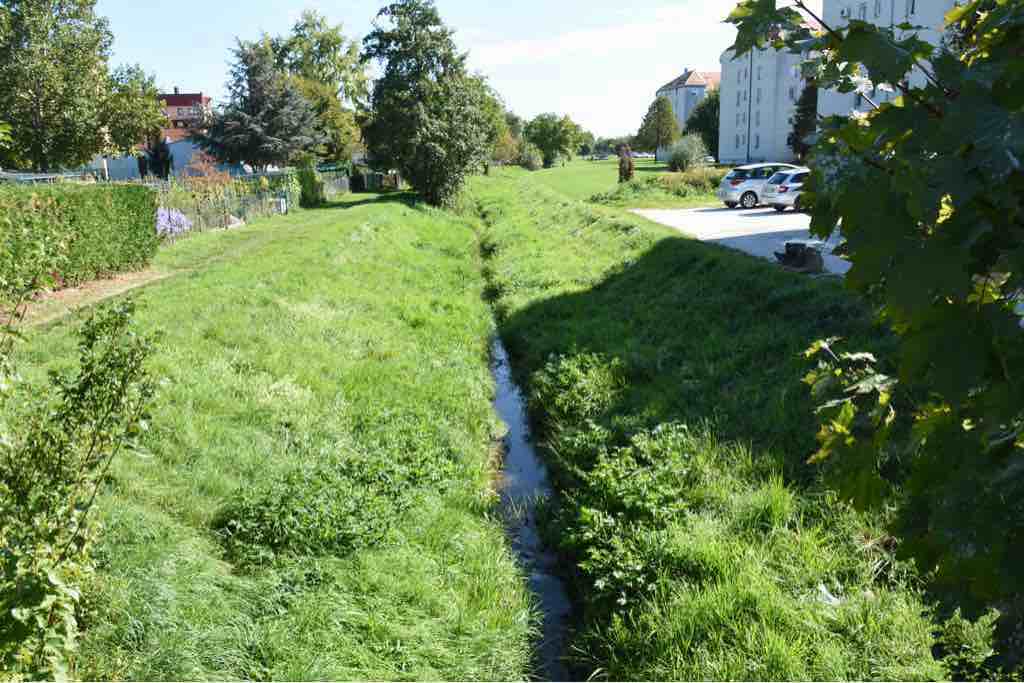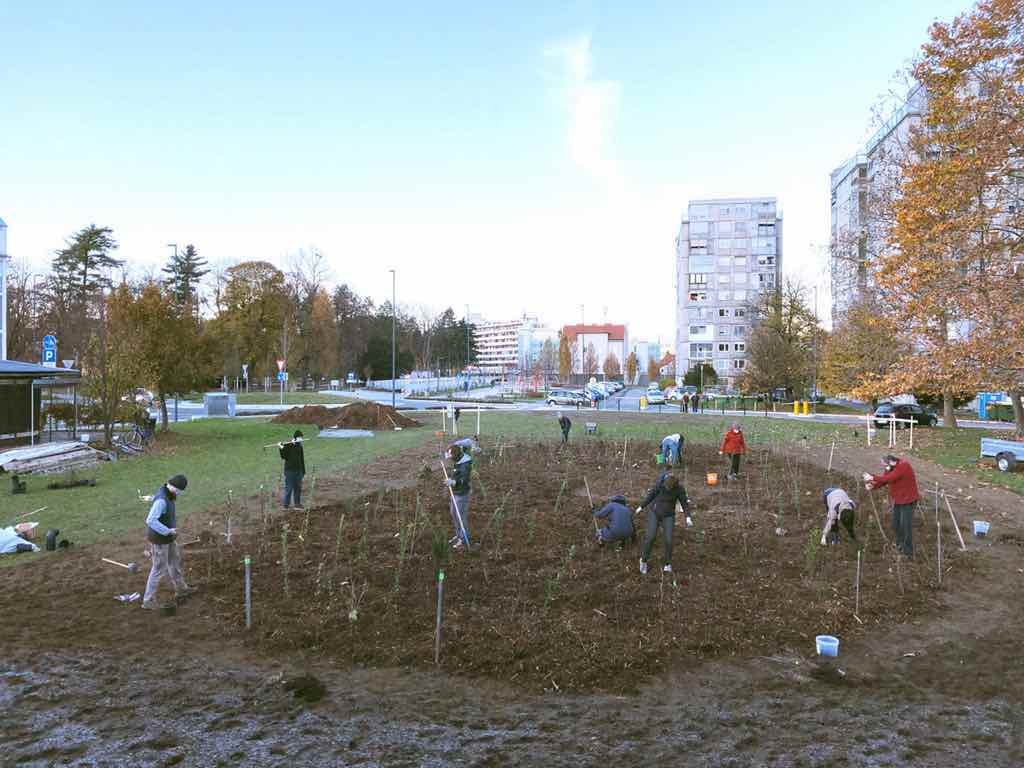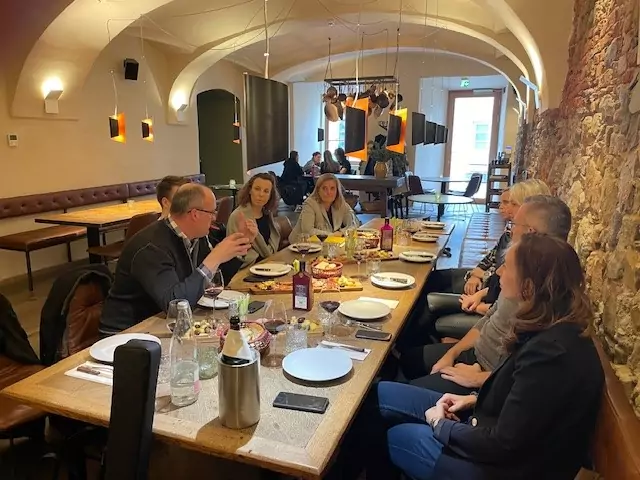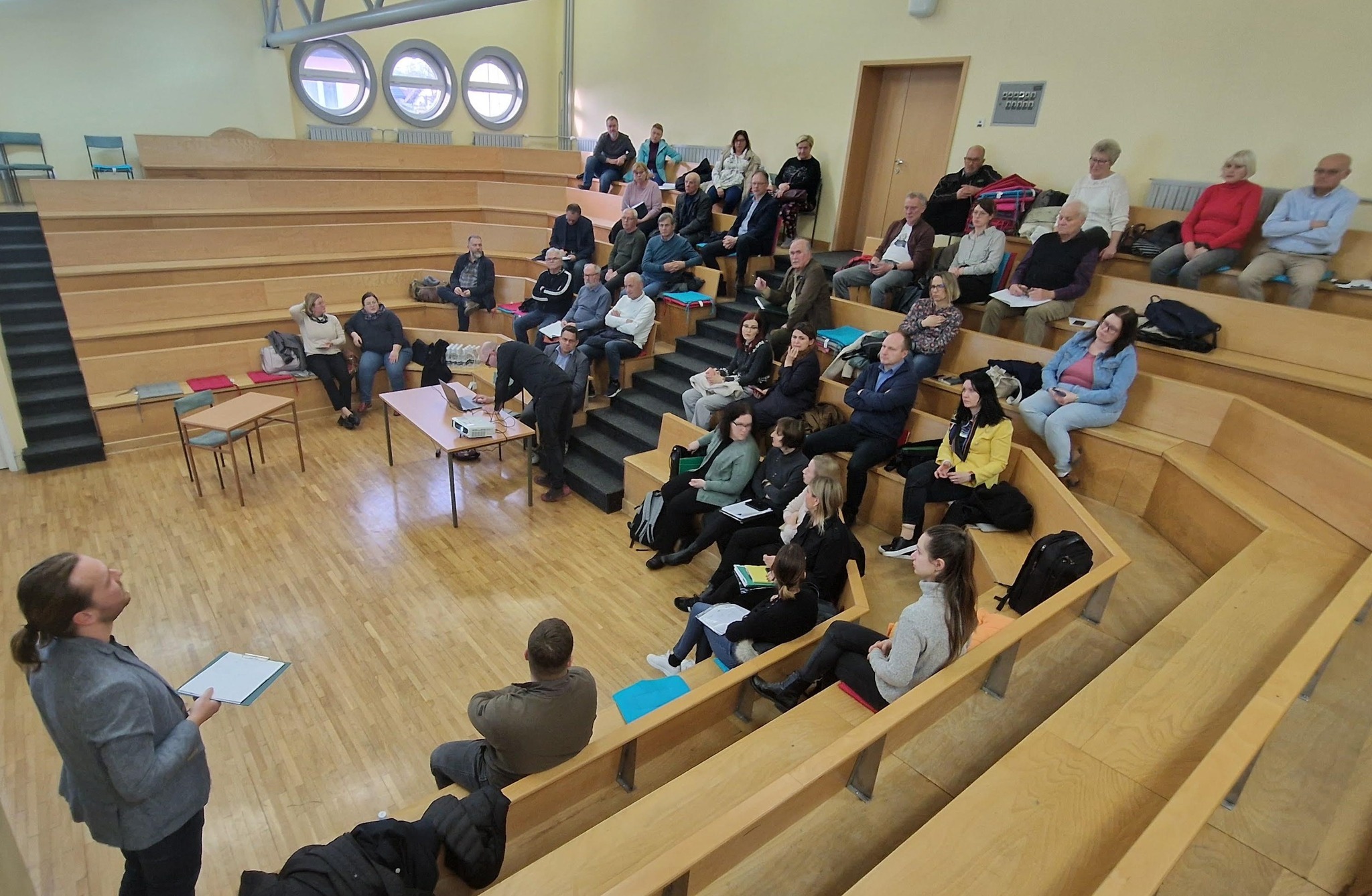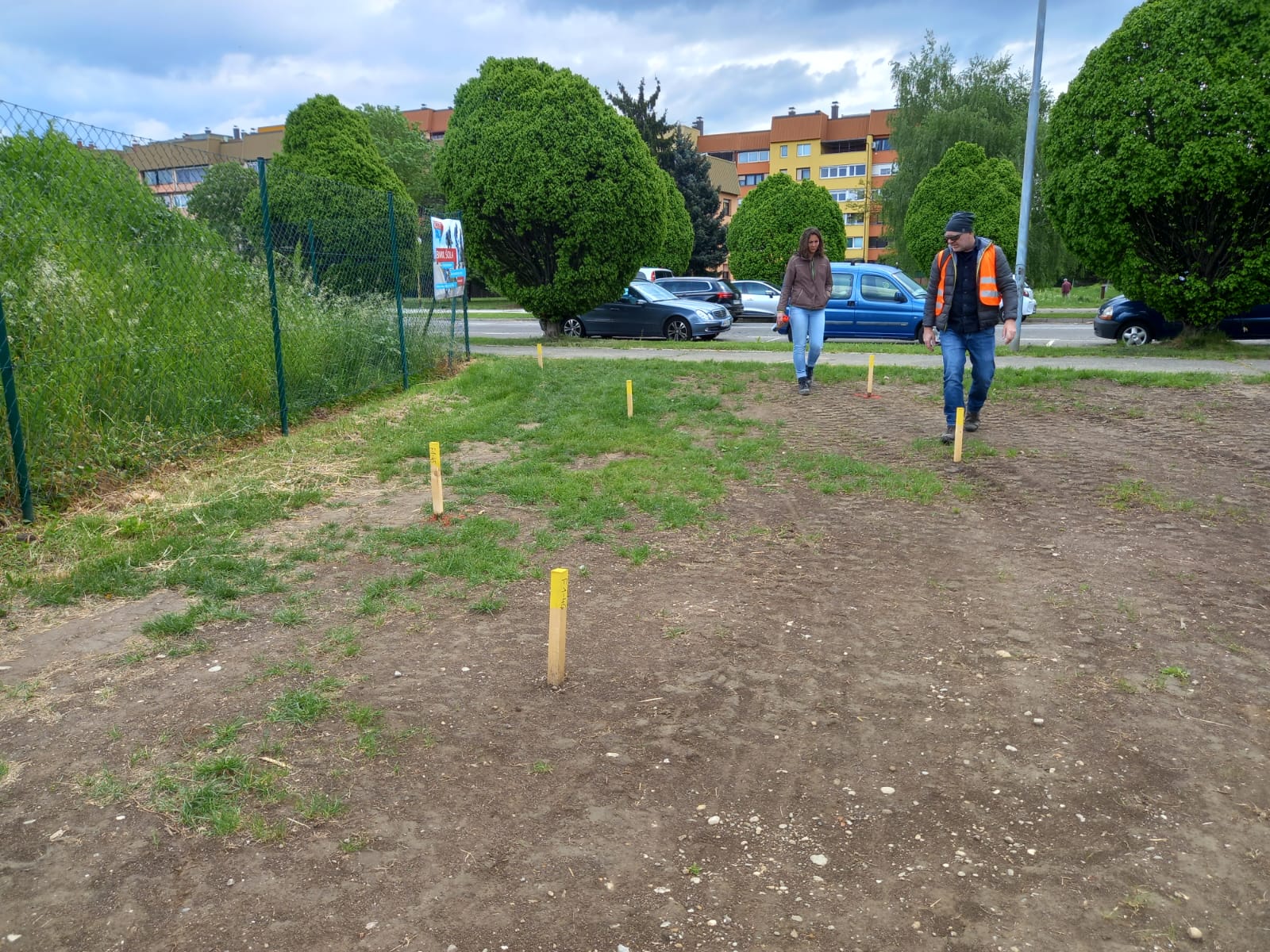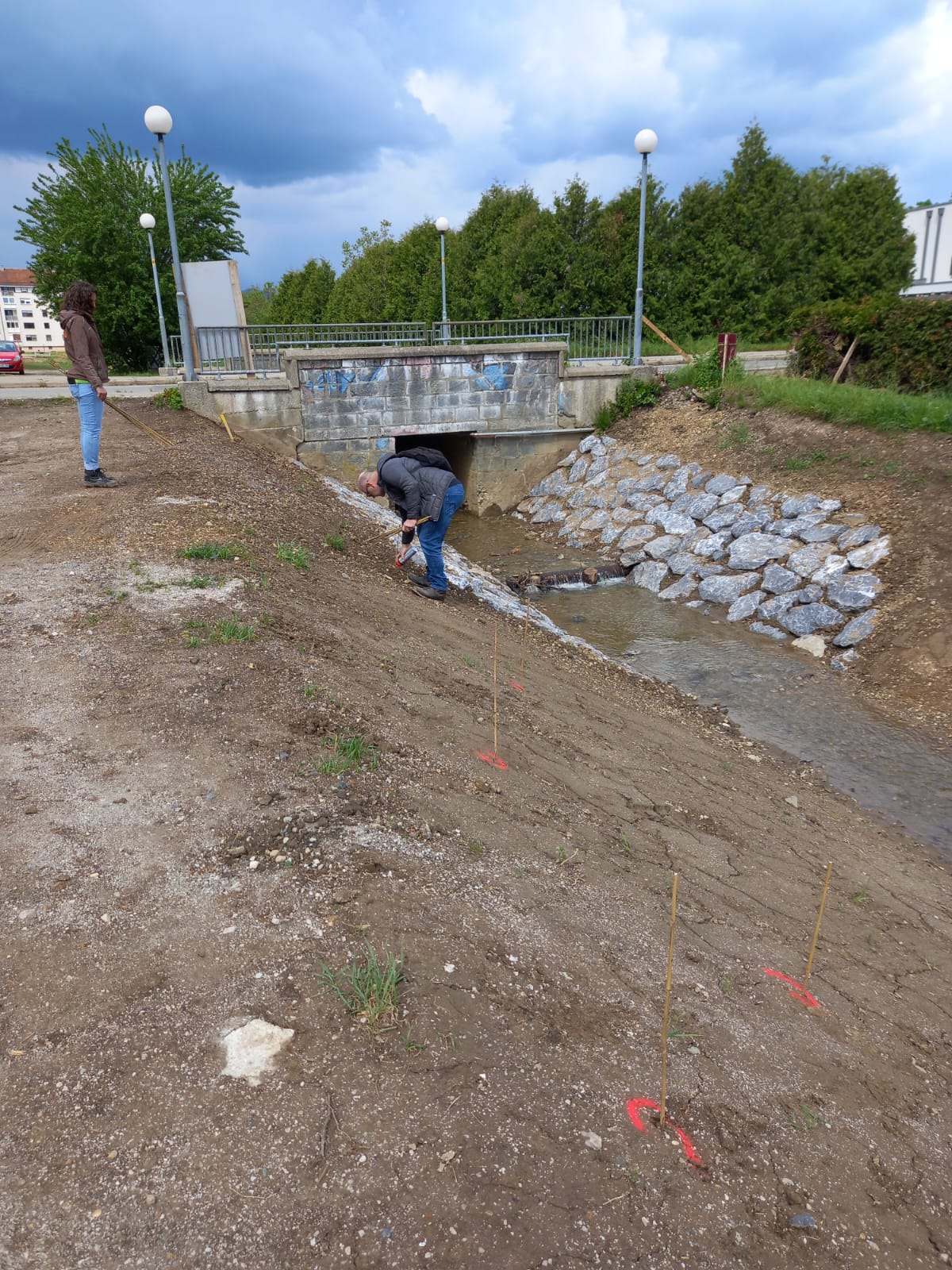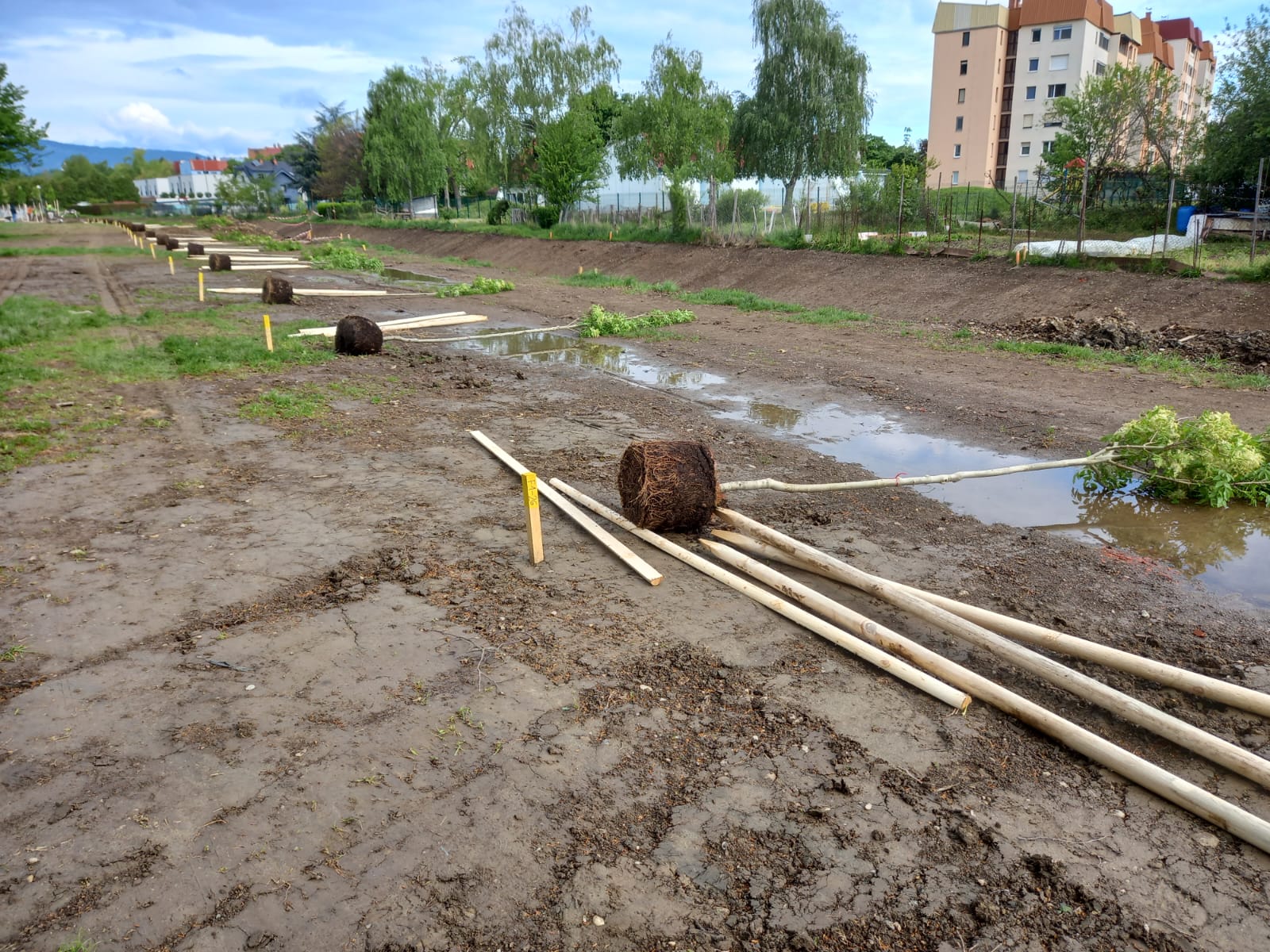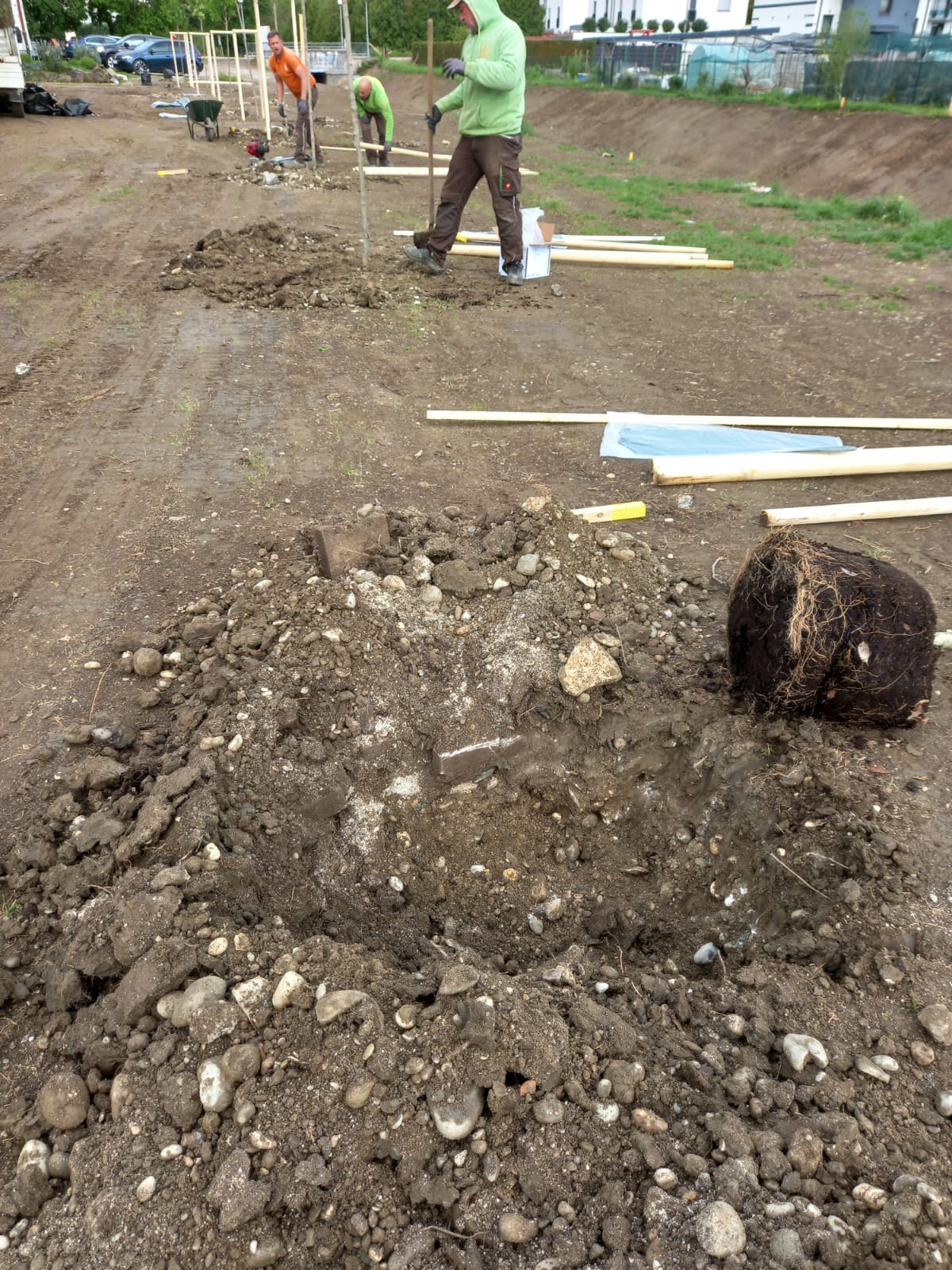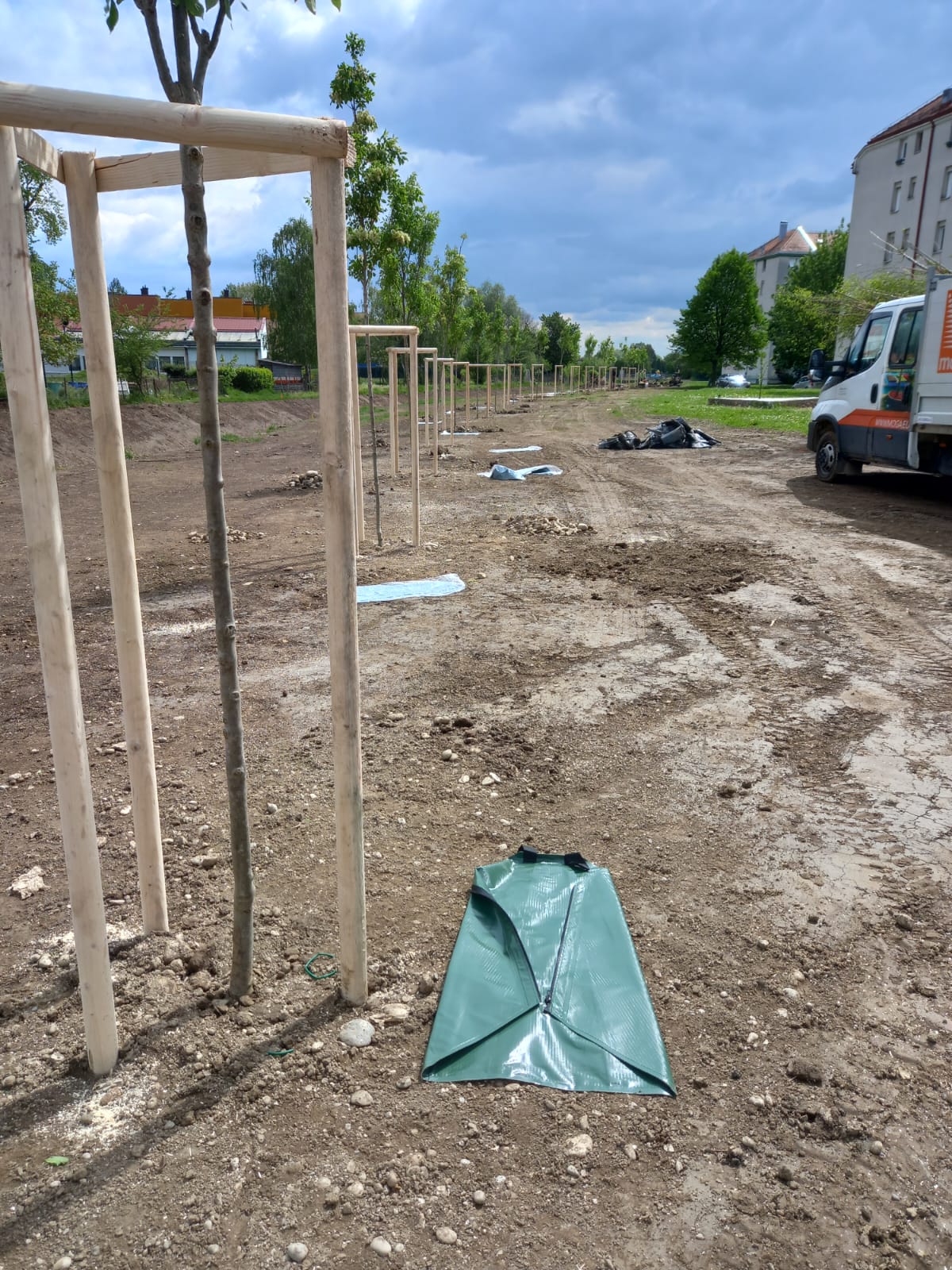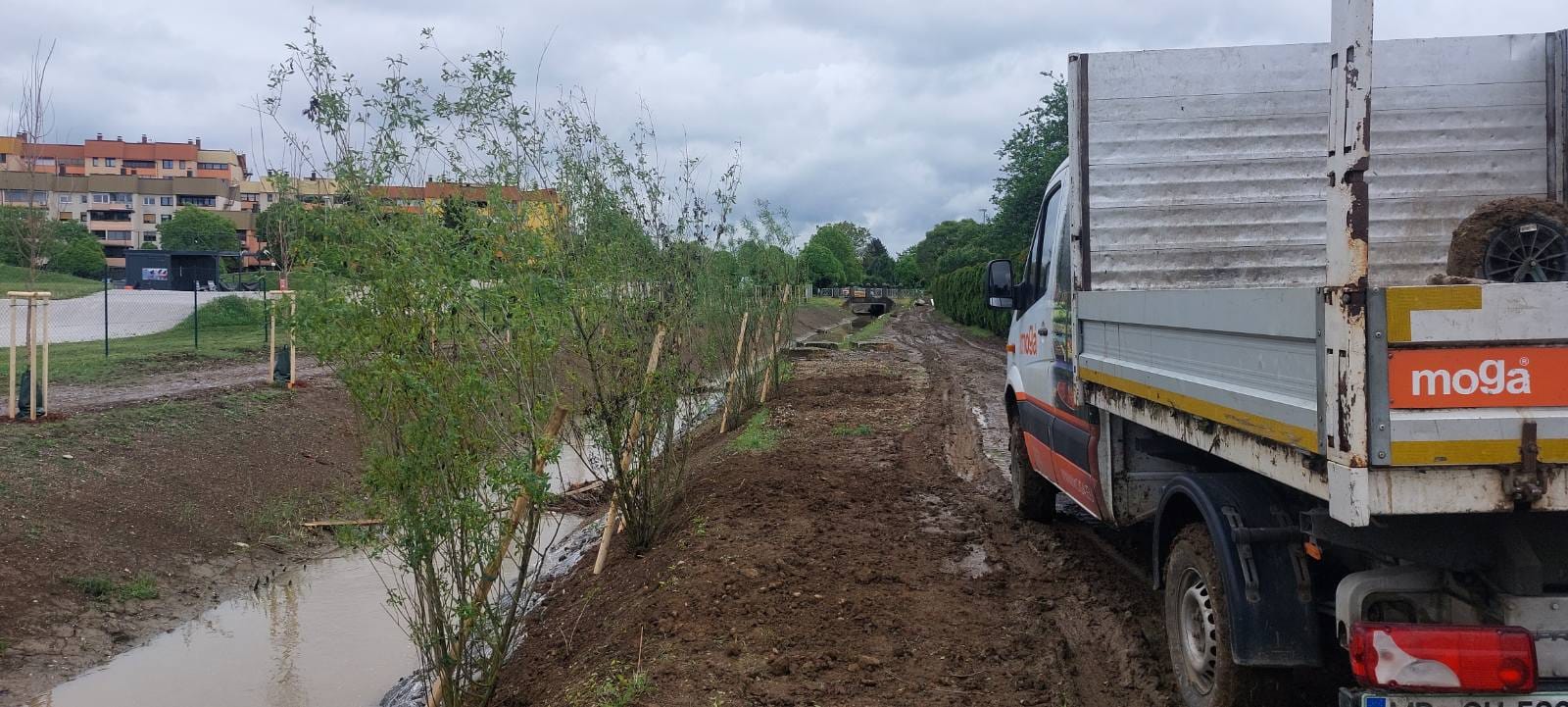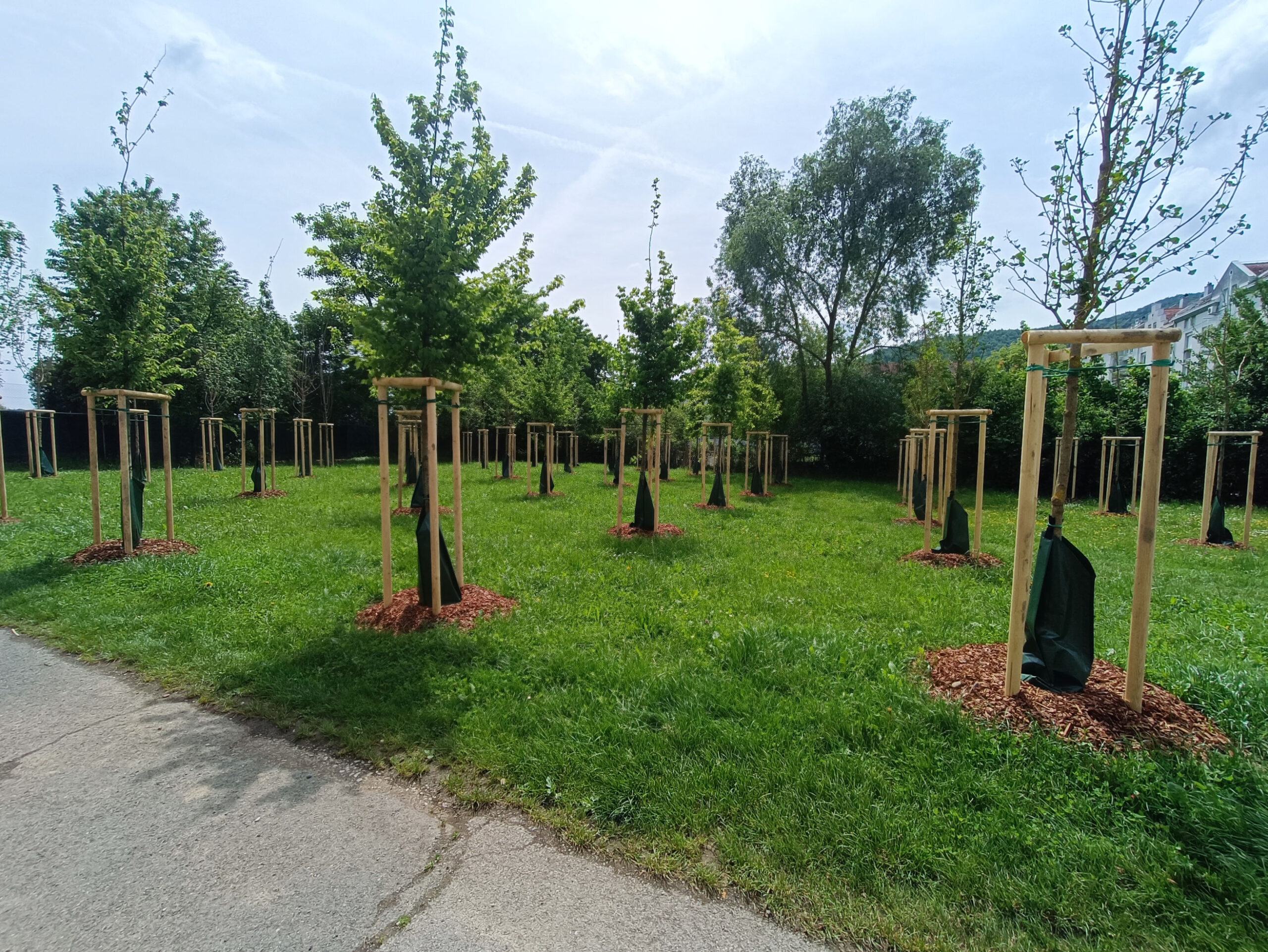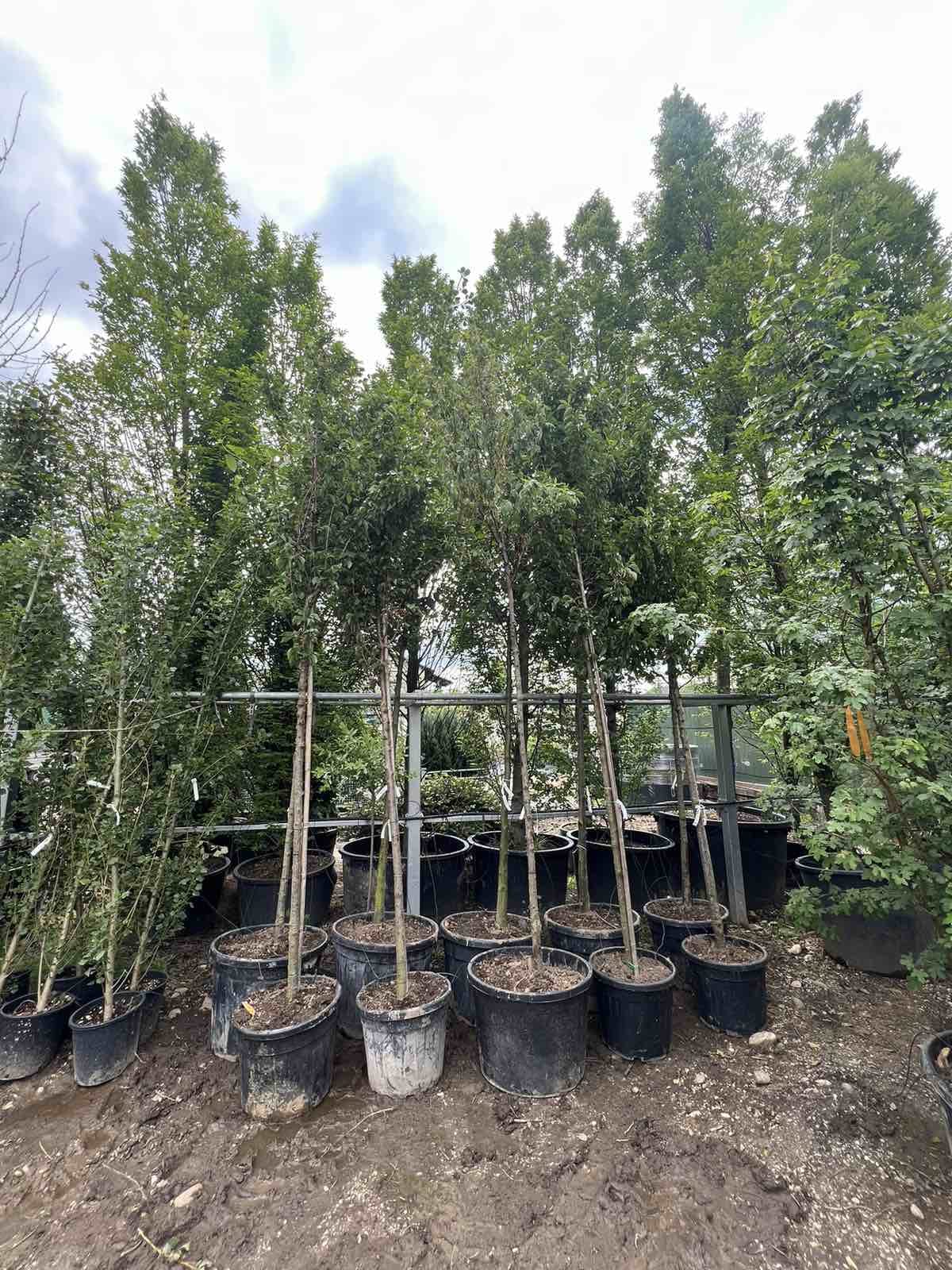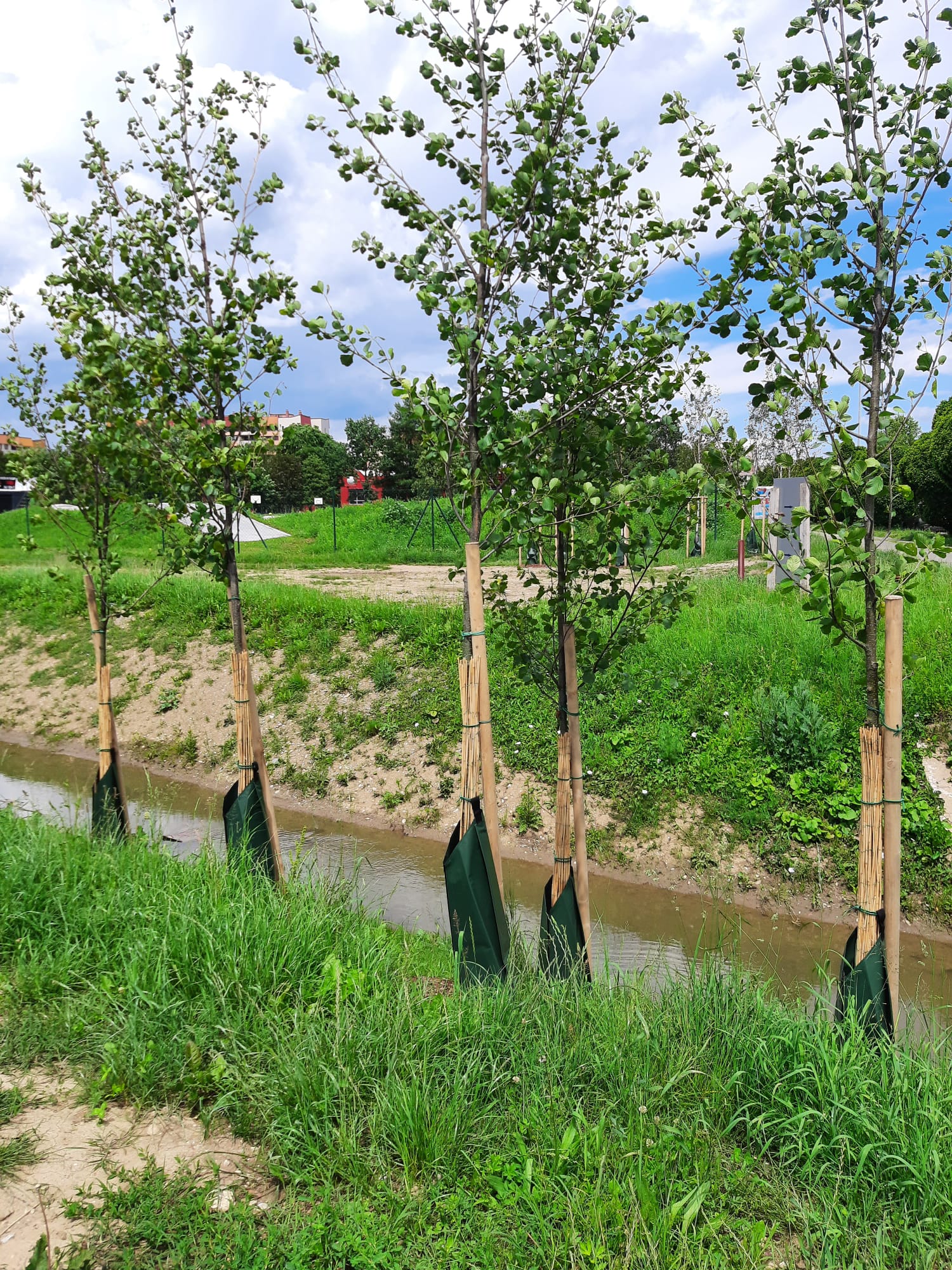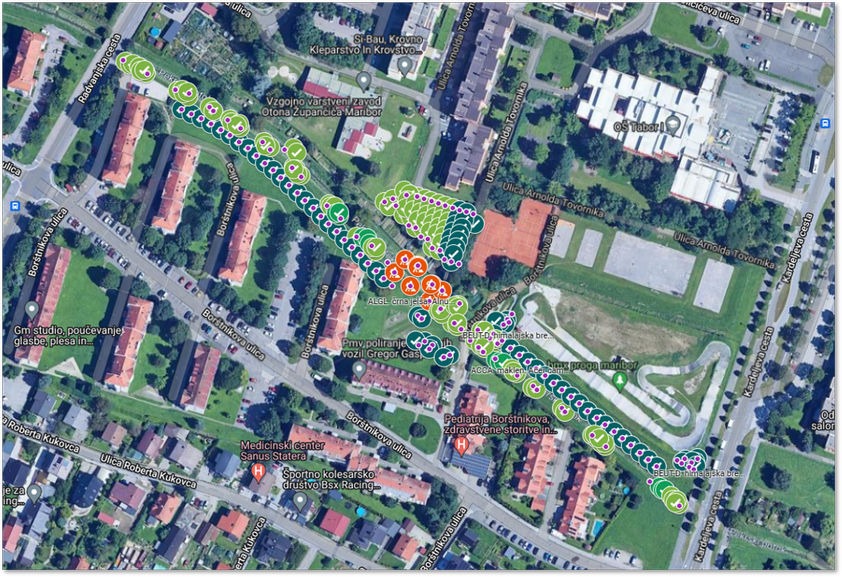Maribor demonstration will experiment with biophilic urban spatial design
Maribor demo will establish a biophilic-designed network of nature-based spaces throughout the waterway of river Pekrski, creating a seemingly free-flowing continuity of natural environments leading to a climate resilient neighborhood. Biophilic design is a concept to increase occupant connectivity to the natural environment through the use of direct nature, indirect nature, and space and place conditions. A regenerative sustainability approach based on biophilic design patterns can improve air quality and climate resilience in the long term, while providing greater health, social cohesion, and well-being for residents.
Several interventions will be implemented:
- green corridor
- riparian cycling route
- pocket gardens
- blue infrastructure
- An urban mobile forest with species targeting particular pollutants movable to different areas, where pollution in each moment is most prevalent.
The City of Maribor is naturally divided by river Drava into two riverbanks. Intense build-up of residential neighborhoods and industrial complexes during 1960s, 70s and 80s has significantly reduced the green areas in the right bank making it less resilient and unfriendly for inhabitants of neighboring districts, causing life-quality imbalances between both parts of the city and resulting in misused, unused and underused areas.
Further degradation of green urban environment and unplanned sporadic overgrowing is causing increased flood risks and spilling into downstream districts, leaving the green areas unattended and uncared for. Eventually, they have become treated as degraded and derelict exploitation objects for individual conveniences (illegal landfilling, artificial impoundments, burning areas, traffic shortcuts, etc.), which is partially based on lack of knowledge and education that would generate respectful use by citizens. The project for the regeneration of the riparian linear park alongside Pekrski potok (i.e. Pekrski brook) was developed through a participatory process co- designed with citizens and co-developed with different experts. The entire intervention is divided in five sections, each section implementing different NBS. The section chosen for UPSURGE is particularly burdensome for air quality due to individual houses with independent furnaces and heating solutions (primary source of air pollution) and due to the high number of surrounding residents, pollution from exhausts (secondary air pollution source).
Maribor will implement several connected NBS for the recovery of an urban waterway to unify blue-green infrastructure, presenting the benefits of the of the transition to a regenerative economy and holistic thinking. Expected outcomes will be:
- Establishment of a 500 meters long green corridor with targeted air quality and climate regulation species demarcating the existing stream and grey infrastructure, equipped with bilateral tree planting and several natural spaces for active living, well-being and citizens’ engagement
- A pocket park equipped as a meditation garden to rest and improve the well-being of citizens.
- A pocket park equipped with a moveable urban forest
- A “tree nursery” packet park where trees will grow for further targeted transplants around the city to fight pollution
- Regulation of critical 100 meters of stream banks, which will increase the retention capacity of the water body for cases of instant floods during downpours (e.g. willow twigs will be implemented complementary and prior to UPSURGE project demo execution)
- Redesigned spatial planning approach for the city of Maribor, based on the biophilic-oriented solutions and connectivity of green spaces throughout the city.
NEW! Follow the Maribor demo storymap
Place Lab in Maribor
Members of the Competence Group (CG) primarily come from the area surrounding Pekrski potok (Pekre creek), including various municipal districts and educational and care institutions. Additionally, one member represents the City Municipality of Maribor, and another is our contracted arborist, who will monitor the site following the planting phase. Our first kickoff meeting took place in December 2023, where we introduced the Upsurge project and our plans for Pekrski potok. At the second meeting in May 2024, we presented the completed planting process and discussed upcoming activities for this and next year. These activities will involve children and their grandparents, women, young mothers, and elderly residents living around Pekrski potok.
NBS implementation
The planting process for the Upsurge project around Pekrski potok began in April 2024 after all precise arrangements were made with the involved contractors. This arrangement was crucial for an accurate and precise stakeout of the site where the trees would be planted. In the meantime, the planting company and the arborist compiled a list of trees, detailing the type, quantity, and location. We planned the planting in three phases (Phase 1, 1a, and 2), and at the beginning of May 2024, 216 trees were planted on site. Watering bags have been installed on all trees (particularly necessary at this stage due to the summer heat), and later some sensitive species of trees have also been given a wooden cover around the trunk. A small number of trees were temporarily planted in pots due to ongoing construction. These trees will be planted on site once the construction is completed. All trees will be maintained by the planting company for 3 years and monitored by our arborist. Additionally, for monitoring purposes, we created an interactive map where all these trees are marked with detailed information (location, type, and condition) and is updated monthly by our arborist.
Story map website
The evolution of this Demo site is also shown through pictures and small descriptions in the UPSURGE Story map website.




